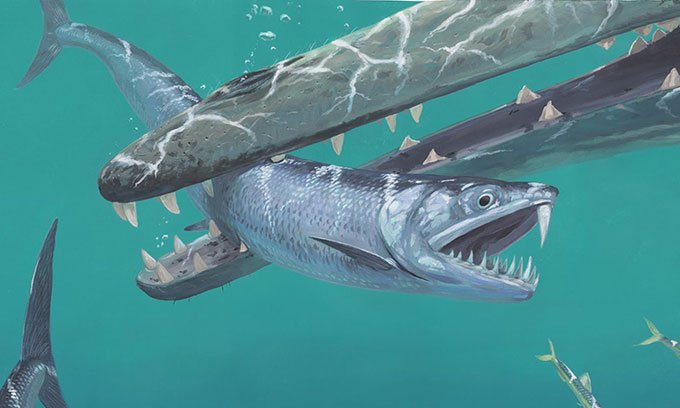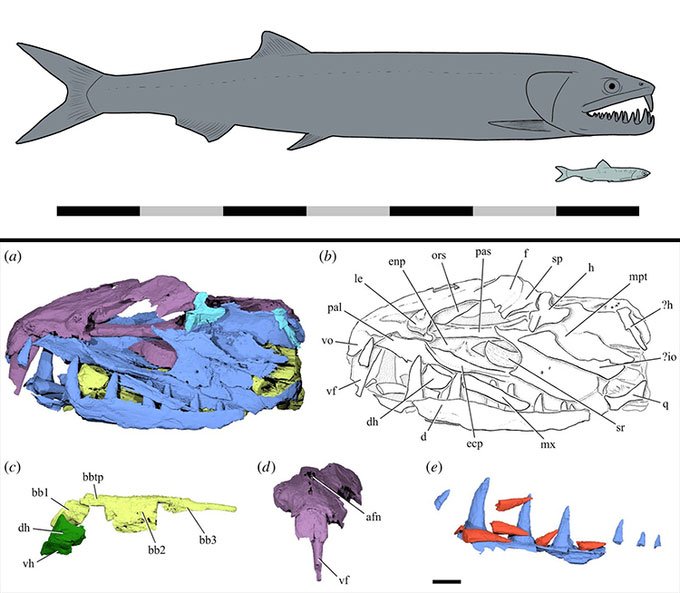Discovered 'vampire fish' with bizarre teeth
The 45 million-year-old fossil in Pakistan reveals an unprecedented history of a fish with only one tooth in its upper jaw.
The tooth structure of this ancient creature was so special that scientists decided to name it Monosmilus chureloides . "Monosmilus" means a sword tooth, while "chureloides" refers to a vampire-like demon with long fangs in the folklore of several South Asian countries, including Pakistan, where the fossils be excavated.

Graphics that simulate a Monosmilus chureloides attacked by predators. (Photo: Joschua Knüppe)
As described, M. chureloides is about a meter long when growing up. They lived 45 million years ago in the shallow waters of Pakistan, at the same time and place with some 4-legged whales like Dalanistes.
Fossil analysis showed that the creature had only a single tooth in the upper jaw like a sword tooth. Meanwhile, the lower jaw has up to 16 fangs tapering back; the largest one is 2cm long, about 20% of the head length, according to Alessio Capobianco, lead author of the study from the University of Michigan, USA.

The tooth structure and head bone of M. chureloides. (Photo: Novataxa).
"When closed, the maxillary teeth extend from the tip of the mouth to the bottom of the chin. It is difficult to explain its purpose exactly. No fish, living or extinct, has a similar tooth structure." " , Emphasized Capobianco. "M. chureloides can use this sword tooth as a trap, like today's deep sea fish, or use it to stab other fish."
The only fossil of M. chureloides was excavated in 1977 by an expedition team from the University of Michigan and Pakistan's Geological Survey, but it has only recently been examined.
Anatomical analysis shows that this "vampire fish" is closely related to today's anchovies. "It was a big surprise, because all the anchovies were much smaller than M. chureloides. Most ate only plankton and had very small teeth , " Capobianco explained.
The study details were published in the May 13 issue of the journal Royal Society Open Science .
- 'Vampire fish' has fake fangs
- 'Vampires' in Myanmar
- The most bizarre fish species on the planet
- The most unusual and dangerous fish
- Payara's scary weapon - one of the world's most dangerous freshwater fishes
- The bizarre fish that
- Blood-sucking vampire fish flooded many rivers in England
- Exotic fish with human-like teeth, can
- Catch the 'blood-sucking monster' with vampire teeth in Hanoi
- 7 most bizarre creatures in the ocean
- 10 aquatic monsters of the Amazon river
- The American fisherman was shocked when she caught the bizarre bipedal fish
 Discovered an ancient centipede fossil 99 million years old
Discovered an ancient centipede fossil 99 million years old Discovered bat-like dinosaurs in China
Discovered bat-like dinosaurs in China Discovered a 200-year-old bronze cannon of the coast
Discovered a 200-year-old bronze cannon of the coast Discover 305 million-year-old spider fossils
Discover 305 million-year-old spider fossils